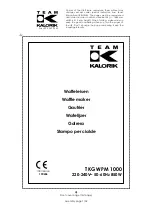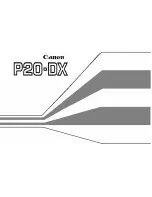
8
8
W W W . V I N O T E M P . C O M
Connecting the water supply
IMPORTANT:
Improper water line connection may result in flooding. Professional installation is
recommended. Review state and local plumbing codes before installation.
The ice maker requires a continuous water supply with a minimum pressure of 15 psig
and a static pressure not to exceed 80 psig.
The temperature of the water feeding into the ice maker should be between 41°F and
90°F for proper operation.
Deionized water is not recommended for use with this unit.
Ensure that hoses are not damaged during installation and check for leaks after
connecting the water line.
Connecting the water line (requires ½ inch open-end wrench, Phillips screwdriver)
1. Turn off main water supply and turn on the nearest faucet long enough to clear the
line of water.
2. Find a ½" to ¾" vertical cold water pipe within range of the install location (the water
supply hose provided with the ice maker is 9 feet long).
3. A shut-off valve must be installed to the main water supply. If the water pipe has a
plain piece of copper tubing, attach a ¼” O.D. compression union to the tubing and
remove the nut.
4. Connect the nut of the water supply hose to the tap, and connect the other end to the
water inlet. Tighten firmly by hand, then one-half turn with the wrench.
5. Turn on main water supply and tap. Check for water supply connection leaks. Tighten
every connection (including connection at the water inlet).
IMPORTANT:
Pay close attention to the “Water inlet” and “Drain outlet” markings when
connecting the water supply hose and drain hose.
Connecting the drain line
The drain line must be connected before using the ice maker. If there is a drain line near the ice
maker or if the unit is to be used outside, it is best to drain water to the drain line through the
drain hose provided with the ice maker.
1. Locate the floor drain near the ice maker. The length of the drain hose provided is 5 feet.
Remove the rear drainage plug from the drain outlet at the rear of the ice maker. Connect
the nut of the drain outlet to the water draining hose, and insert the other side of the hose
into the drain line. Never allow the drain hose to hang or loop higher than the bottom of
the ice storage bin.
2. All horizontal runs of drain lines must have a fall of ¼ inch per foot. An air gap will likely
be required between the ice maker drain tube and the drain/waste receptacle. A
standpipe with a trap below it or a floor drain is acceptable for the drain/waste receptacle.
3. Pour 1 gallon of water into the ice storage bin to check for leaks in the drainage system.
Tighten any connections that leak.
IMPORTANT:
This ice maker is not a freezer. Infrequent drainage will cause a high rate of
melting in the ice storage bin.


































